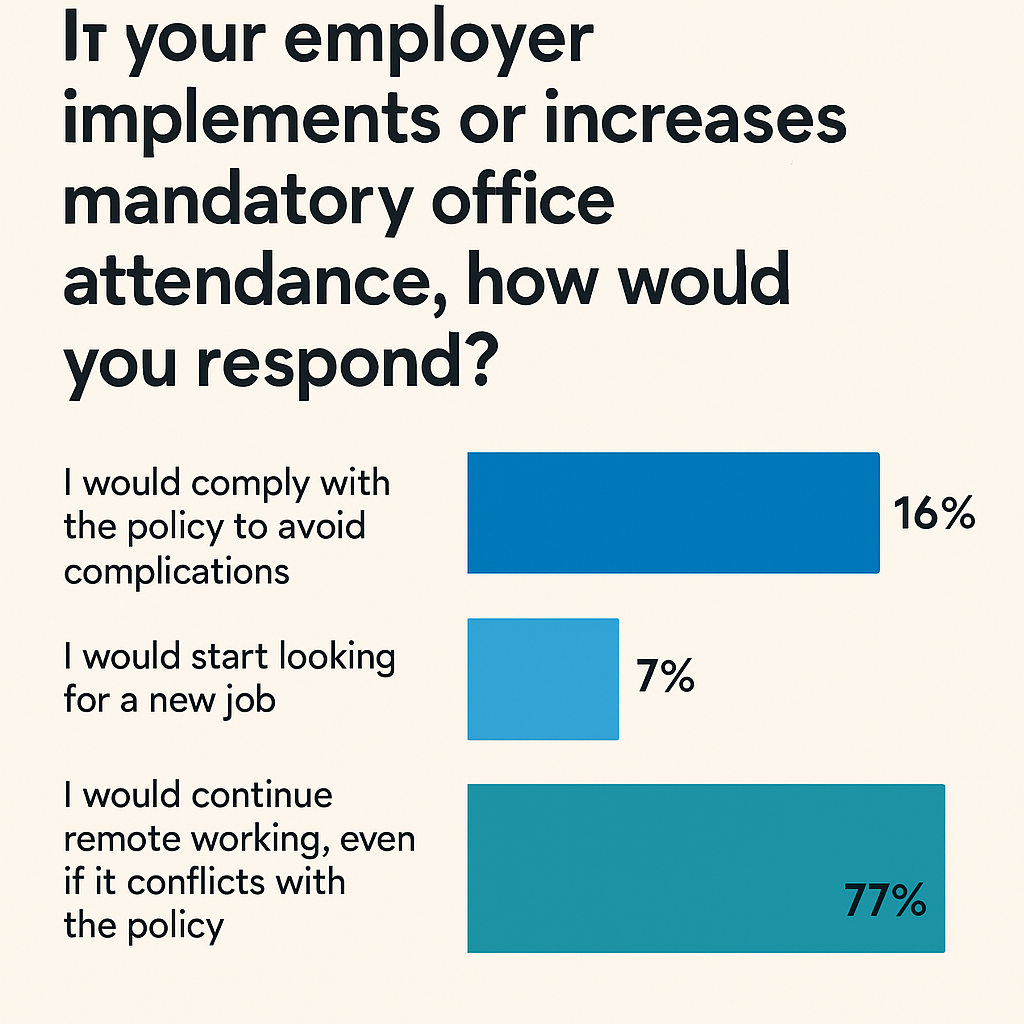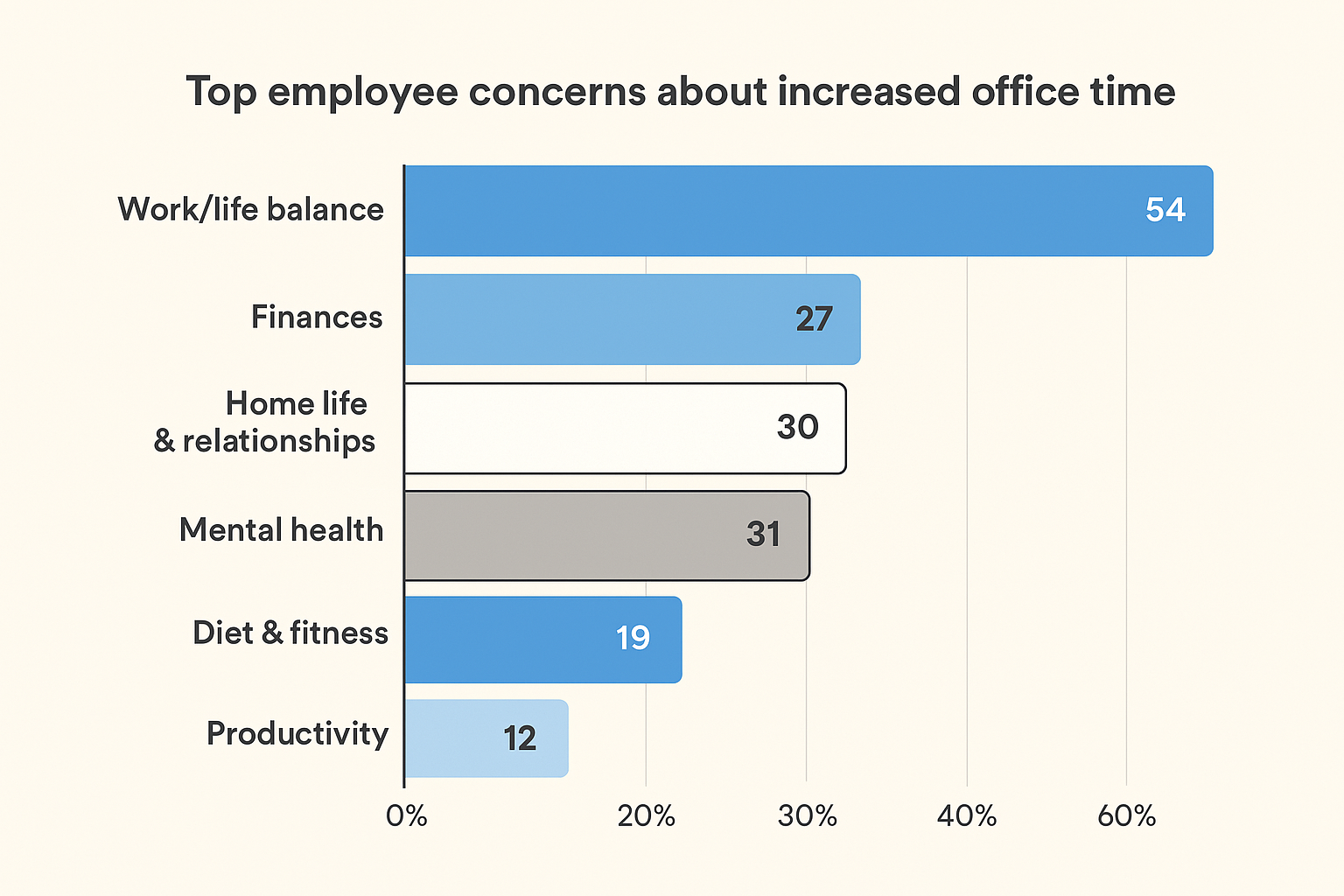As big corporations like Boots, JD Sports, and Santander lead the charge in getting employees back behind their office desks, many others are following suit. Over the past two years, more and more companies have been shifting gears, asking their teams to spend more time working on-site.
To understand how workers feel about this change, we conducted a survey in January 2025, gathering insights from 1,000 full-time employees. One thing was clear—most folks aren’t thrilled about the idea of being tied to a desk five days a week again.
Here’s What Workers Told Us:
-
60% of remote employees said their companies have rolled back remote work perks in the last two years.
-
1 in 6 would rather leave their job than go along with strict return-to-office (RTO) policies.
-
Over a third of millennials said they’d ignore RTO mandates entirely.
-
A whopping 96% said they’d need meaningful incentives to even consider coming back full-time.
-
2 out of 5 believe heading back to the office would hurt their job satisfaction.
-
Younger employees are leading the charge in pushing back against office mandates.
And get this—among those who saw their remote work policies change, 38% are now being asked to come in all five days.
Still, while 77% of employees said they’d comply to avoid any fallout, nearly 7% admitted they plan to ignore the rules—either by continuing to work from home or showing up less than expected.
And it’s not just talk. 16% of those surveyed said they’d look for another job if RTO became non-negotiable. That’s a real risk for companies trying to retain top talent.

Generational Attitudes Toward RTO
Generation X seems to be the most compliant bunch—40% said they’d stick to the rules just to avoid getting in trouble. Millennials, on the other hand? Not so much. 37% plan to sidestep office mandates, and 35% are open to quitting if forced to come back in full-time.

Work-Life Balance Takes a Hit
It’s no secret that many workers have come to love the flexibility of remote work. Avoiding long commutes (an average of 62 hours a year for Brits!) has been a game-changer.

Over half of employees (54%) said going back to the office would mess with their work-life balance. The daily grind, the rush-hour traffic—it’s a lot to give up.

And then there’s the mental health angle. Around one in three employees fear that being in the office full-time could harm their mental wellbeing. A recent YouGov report showed that 20% of British workers took time off last year due to mental health concerns. Clearly, this is something leadership can’t afford to ignore.
Some See the Upside
Still, it’s not all bad news. Nearly half of the respondents admitted they might actually get more done in a structured office environment.
Even with travel and lunch costs, more than one-third said they’d probably spend less working from the office. Remote workers reportedly rack up about £47 a week on energy bills alone.
So, What Would Make Returning Worth It?
Despite the tension, most big companies aren’t offering much in the way of motivation. Take Amazon CEO Andy Jassy, for instance—he didn’t mince words when he told employees refusing to return that “it’s not going to work out for you.”
But could incentives help bridge the gap? Our survey says yes.
-
65% of employees said a pay raise would make returning to the office more bearable.
-
54% said they’d be open to RTO if they could start and finish at flexible hours to avoid peak commuting times.
-
However, 10% said nothing—not even extra pay or perks—could convince them to return.
Final Take
While companies are pushing hard to bring workers back, there’s a clear resistance brewing. Sure, some employees acknowledge the perks of office life, like increased productivity and potential cost savings. But for many, the idea of giving up flexibility, peace of mind, and personal time just isn’t worth it.
About the Survey
This survey was commissioned by TopCV and conducted via Pollfish between January 13 and 14, 2025, targeting 1,000 full-time employees aged 18 and up. To ensure balanced results, extra care was taken to account for generational differences and avoid skewed findings.

